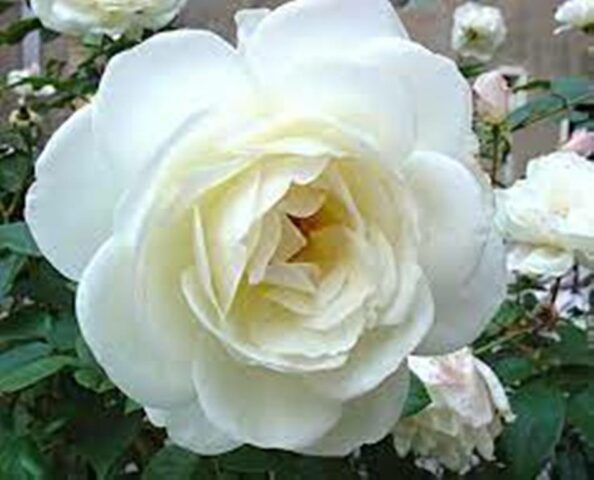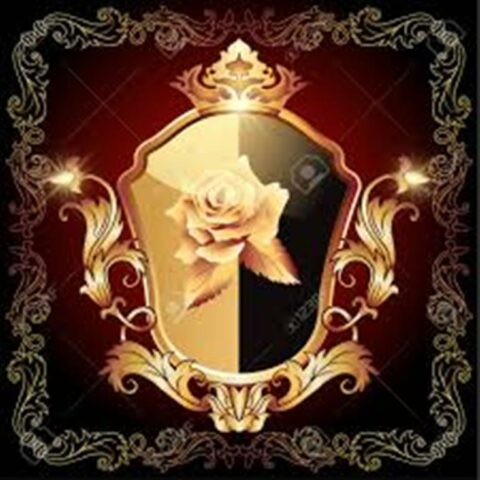The rose is almost an emblem of the western world. Ancient cultures, beliefs, religions and ideologies have used its image. A symbol of beauty, love and happiness, it prevailed over the Egyptian lotus flower or the Greek narcissus and, despite having evolved with innumerable variations that has not prevented it from maintaining the original strength of its symbolism.
The beauty of its petals and the smell are still the most valued, sums up Carme Barceló, botanist from the Veterinary Faculty of the UB. The rose is a flower already mentioned in the Bible and cultivated since ancient times. Probably, it comes from the north of Persia, from the surroundings of the Caspian Sea or the Persian Gulf, from where it spread, through Mesopotamia, to Palestine, Asia Minor and Greece. In Rome, red roses were consecrated to Venus and the festival of roses, the Rosalias, were part of the ceremonies linked to the cult of the dead.
With or without thorns – And the Christian world found a vein here. The first Christians identified the 5 petals of the rose with the 5 wounds of Christ and the flower with thorns was the image of torment of the martyrs. The flower is associated above all with the Virgin. And it is this tradition that explains why the theme of the Madonna with roses was repeated like a rosary; a virgin with roses in her hand (like the paganized central figure in Botticelli’s Spring), sitting on a bed of roses, in front of a rose bush.
Cup and blood –The rose is, in Christian iconography, either the cup that collects the blood of Christ, or the transformation of this blood or the symbol of the wounds of Christ, explains Jean Chevalier in the Dictionary of Symbols. In fact, there are abundant iconographic testimonies of it. On a 12th-century iron destined to keep consecrated hosts, the blood of the Crucified’s wounds can be seen falling in droplets that turn into roses, while in the 13th-century stained glass window of the Cathedral of Angers the divine blood flows in streams and it also expands in the form of roses. And it is the symbol of the cup. In fact, the flower evokes a receptacle. Are we not talking about the chalice of a flower? On the altar of the abbey of Fontevrault the rose is located at the foot of a spear and along it drops of blood rain, which suggests that the rose collects them, René Guénon wrote.

Esoteric rose – But the rose penetrates the symbolism to become a denomination. This is the case with Rosicrucian, a Christian secret society of the Renaissance (of which various modern esoteric organizations that use rituals related to Freemasonry are considered heirs). Various Rosicrucian symbols identify the order with one or more roses decorating a cross, while its traditional emblem places the rose in the center of the golden cross, at the site of the heart of Christ, the sacred heart, Jean Chevalier observes attentively. And Dante placed his candid rose in the last circle of Paradise.
Mystical rose – The rose is a symbol of power, of spiritual instructions but also of regeneration, resurrection and immortality. The Gothic rose window and the compass rose clearly show the transition from the rose to the wheel symbolism. And it is a symbol of ecstasy or mystical rebirth. On the battlefield and its literary epic, rose bushes and rose hips (its little fruit), and roses and anemones grow. And it is that when human life is consumed with a violent death interrupting the possibilities of creation -it tries to be prolonged in another way: the plant, the flower the fruit, points out the philosopher MirceaElíade, historian of religions. And the mystical movements have not withstood its force. The 17th-century religious poet Angelus Silesius (Johann Scheffler) wrote: “The rose is without why; it blooms because it blooms, it doesn’t pay attention to itself, it doesn’t ask you to look at it. And the Muslim mystic sees in the rose garden the place of contemplation. “I will go and pick the roses from the garden, but the perfume of the rose bush has intoxicated me”, says Saadi de Chiraz, recalls Jean Chevalier.

Mythical rose – The cult of the rose has deep roots. This flower was white for the Greeks, but it will change color due to the vicissitudes of Adonis and Aphrodite, whose love aroused the jealousy of Ares. Adonis went hunting and was mortally wounded in a convoluted action of jealousy while Aphrodite came late on stage, who, when running towards her lover, pricked herself with a thorn, so that her blood stains the rose bushes. Another version indicates that, once Aphrodite picks up the corpse of her lover and takes it to the palace, blood flows from the wound along the way so that the rose hedges on one side and the other of the road are stained with blood of Adonis. And since then, all the roses are red on that island.
Stealth and secrecy – The rose has also been the symbol of stealth or secrecy, and many have wanted to see in the intricate leaves of its flower, which does not reveal its interior, a symbol of what should not be transmitted. In the meeting rooms of the municipal houses of Germany, a rose behind the seats is still preserved intact, since the Middle Ages. And in the archives, there are members of the council who were indiscreet in disclosing agreements that had to be silenced in secret meetings.
But before it was a simple flower – The original rose had 5 petals, clarifies the botanist Carme Barceló. But then it became baroque. In Europe, the arrival of Chinese varieties from 1792 to be crossed with European ones -and to be able to bloom continuously under favorable conditions will give rise to all the garden roses of the last two centuries, they point out in the History of Plants. in the Mediterranean Fabio Benzi and Luigi Berliochi.
Identity – The rose is linked to the Catalan identity due to its connection with Sant Jordi, which legend shows hoisting the flag in countless battles of the Reconquest. In the Middle Ages, on the day of Sant Jordi, Catalan society not only venerated the Saint at the altar, but also in profane parties, knightly fair and tournaments, organized by the military establishment of the Catalan nobility. They were parties in tribute to a knight, whose image was linked to the legend of his fight against the dragon and his feat of saving the princess. Legend has it that a rosebush of red roses sprouted from the blood spilled by the beast, and that he took one from it to give it to the princess as a proof of love. And it was from these festivals that the custom arose that the gentleman presents his lady with the red rose, a symbol of passion.

Heraldic rose – The rose has been on the banners of opposing aristocratic factions; in the 2 trenches. Which already has its merit. Maybe that’s why the rose always wins. In the War of the Two Roses the supporters of the House of Lancaster faced those of the House of York between 1455 and 1485. Both families claimed the throne of England by common origin in the House of Plantagenet and as descendants of King Edward III . But York’s rose was white while his rival’s was Lancaster’s red rose. The conflict came to an end with King Henry VII of England, who symbolically linked the white and red roses to create the Tudor Rose. The rose filled the shields. It looks on the shirt of the England rugby team, and at events in the English provinces (Yorkshire and Lancashire) and in Canadian states (Alberta) or the United States (Iowa, North Dakota, Georgia or New York).



